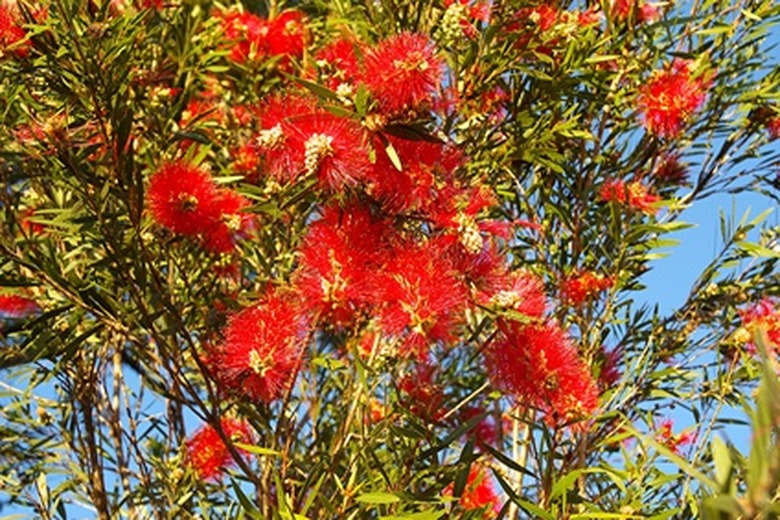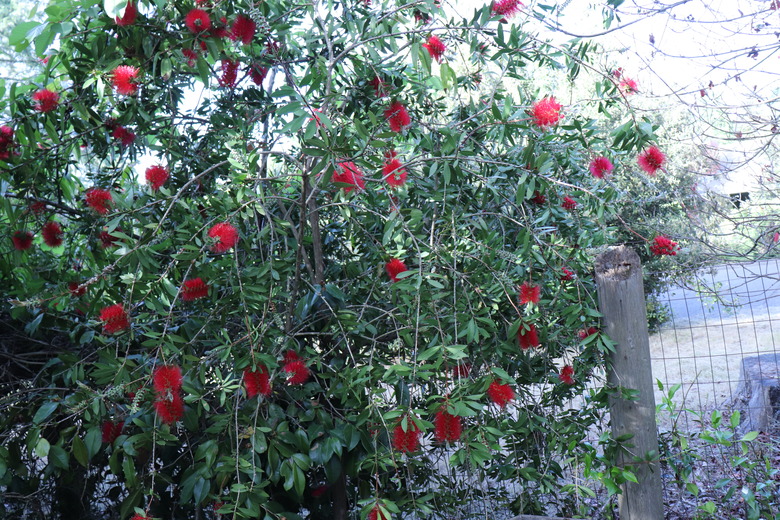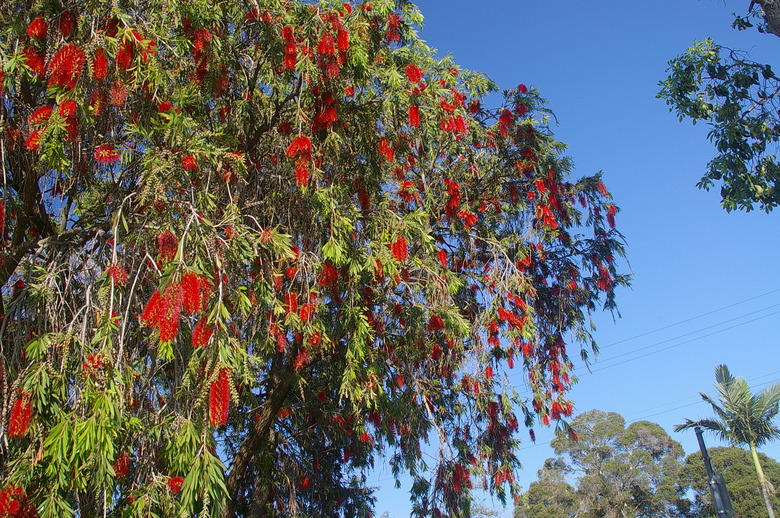How To Grow And Care For A Bottlebrush Plant
Want hummingbirds and butterflies in the garden? The bottlebrush plant is a surefire winner if you do. With its bright red flower spikes and its forgiving growing habit, bottlebrush (Melaleuca spp., USDA hardiness zones 9 to 10) is an easy-to-grow bush or tree if you live in its hardiness zones. The bottlebrush is an evergreen shrub or tree that is native to South Wales and Australia.
About the Bottlebrush Tree
Let's begin with a closer look at the bottlebrush plant's binomial name, assorted varieties and cultural requirements.
Binomial Name and Varieties
If you are researching the bottlebrush tree, you are likely to find it classified in the Callistemon genus, but it has been reassigned to the Melaleuca genus. It is also commonly called either a red bottlebrush, crimson bottlebrush or lemon bottlebrush, all of which are the same variety.
While you can prune a bottlebrush into a bush form or hedge or let it grow into its natural tree shape, you can also choose between two primary varieties: an upright form (Melaleuca citrina, previously _Callistemon citrinu_s) or the weeping bottlebrush (Melaleuca viminalis, previously Callistemon viminalis). Each type is available in a range of varieties and cultivars.
Cultural Requirements
Grow bottlebrush shrubs outdoors in frost-free areas or in containers if you live in a colder zone. If grown in a container, you'll need to prune it to maintain a small tree size and manageable shape; otherwise, a bottlebrush typically grows 8 to 15 feet both tall and wide.
Like many plants, this tree requires full sun and well-draining soil. However, it's not fussy about soil type and pH, being able to grow in both clayish or sandy soils, as well as in slightly alkaline or acidic environments.
It's also drought tolerant once established, so it is a great choice for gardens in locations with dry summers.
Bottlebrush Care
Now let's take a look at how to care for this wonderful plant.
Planting Location
When you bring your bottlebrush tree home from the nursery, consider how you plan to incorporate it into your landscape—will it be a specimen tree and allowed to grow to its full size? Or are you planning to prune it as a shrub, hedge or espalier?
If you are allowing it to grow into its full, natural size, consider its mature growth and plant it at least 12 feet away from other plants. Again, ensure soil with good drainage and a full-sun location.
Add no special amendments when planting so that the tree will adapt to the native soil you have. Water well after planting, and maintain a regular, weekly irrigation schedule during the tree's first growing season.
Tip
Bottlebrush trees can grow quite large, so be sure to plant it at least 12 feet away from other plants.
Seasonal Care
While the bottlebrush is generally low maintenance, it benefits from some regular, seasonal care:
- Fertilization: Fertilize annually in early spring with a balanced fertilizer, which will help the plant maintain green foliage and good flower color.
- Pruning: If you want to maintain a tree shape, prune off suckers that appear at the base of the trunk; otherwise, you will end up with a multi-branched shrub. Over time as the tree puts on growth, remove the lower branches so that the tree develops a proper trunk. To allow the bottlebrush to grow into a shrub, only remove dead branches, crossing branches that touch each other, and branches that clutter the center of the canopy.
- Irrigation: While the bottlebrush can tolerate drought, make sure young plants receive regular watering during the first couple of years to give them a chance to develop a strong root system. However, water only when the soil is dry to avoid saturated conditions that can lead to fungal diseases.
Pests and Diseases
The bottlebrush is resistant to most pests and diseases, although it can develop root rot if grown in poorly draining soils and powdery mildew if the foliage remains wet. It is somewhat susceptible to mites and insect galls.
If you're growing this plant indoors, monitor it for spider mites and scale.


